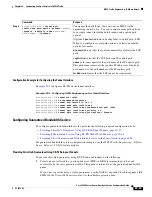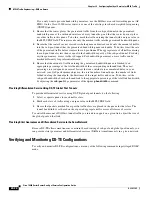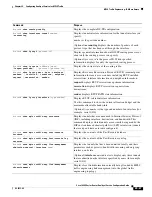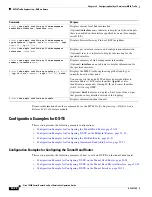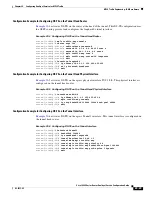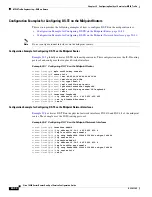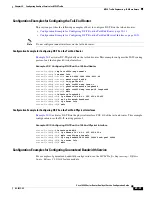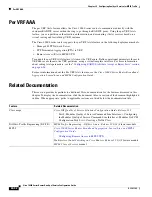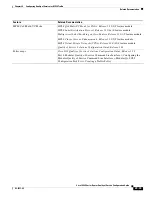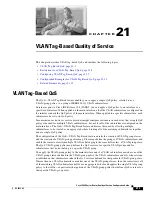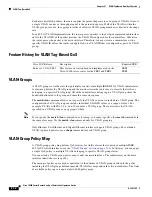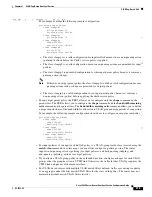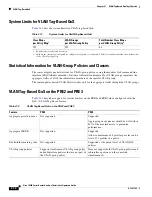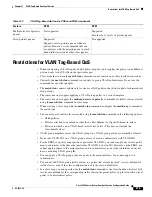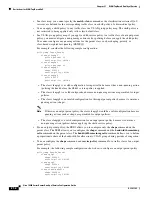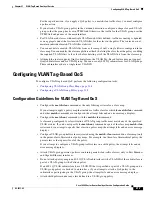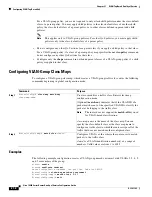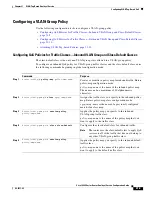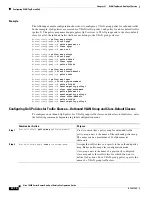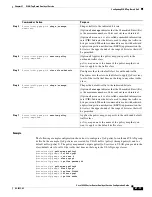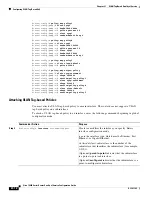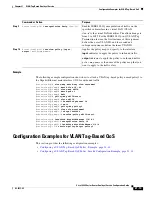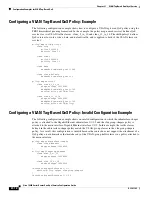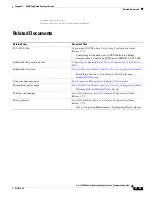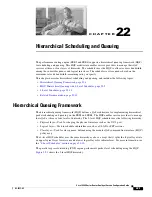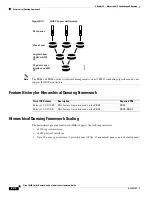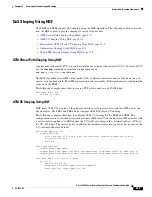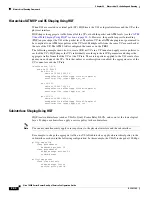
21-5
Cisco 10000 Series Router Quality of Service Configuration Guide
OL-7433-09
Chapter 21 VLAN Tag-Based Quality of Service
Restrictions for VLAN Tag-Based QoS
Restrictions for VLAN Tag-Based QoS
•
When configuring a VLAN tag-based QoS policy map, the router applies the policy to one Ethernet
port and only to the VLANs on that particular port.
•
Class maps that contain the
match vlan
command cannot contain any other classification criteria.
•
Currently, the
match vlan
command is used only to group VLAN subinterfaces. Do not use the
command for any other purpose.
•
The
match vlan
counters update only for one-level QoS policies; they do not update for hierarchical
QoS policies.
•
The router does not support applying a VLAN-group policy to a virtual template.
•
The router does not support the
random-detect
and
priority
commands for traffic classes created
using the
match-vlan
command in class maps.
•
When creating a class map with the
match vlan
command, configure the
match-any
command as
the match type.
•
You cannot specify traffic classes created using the
match-vlan
command in the following policies:
–
Child policies
–
Policies attached to an interface other than a Fast Ethernet or Gigabit Ethernet interface
–
Policies in which a non-VLAN-based traffic class exists. (This does not include the
class-default class.)
•
VLAN group members across the VLAN groups in a VLAN-group policy are mutually exclusive.
•
Do not use VLAN ID 1 in a VLAN group unless you create a subinterface with VLAN ID 1.
•
For the PRE2, if a policy map specifies a particular VLAN ID, you cannot apply any service policy
map to subinterfaces that have that particular VLAN ID (or dot1q ID). However, on the PRE3, you
cannot apply policies to the main interface and to subinterfaces, even if the subinterface does not
have a matching VLAN-group ID.
•
You can apply a VLAN-group policy map only to the main interface; you cannot apply it to
subinterfaces.
•
You cannot add VLAN-group traffic classes to a policy that already has QoS services defined for
traffic classes, even if the class configuration is only the class-default class.
•
In a class map, you can specify only the
match vlan
command as the classification criteria if QoS
services are defined for the corresponding traffic class in the parent policy (top-level in a three-level
policy) of a hierarchical policy.
Multiple levels of priority
queues
Not supported
Supported
Provides for 2 levels of priority queues.
Strict priority queues
Supported
Supports a strict priority queue without a
policer. However, we recommend that you
use policers with the priority queue to avoid
bandwidth starvation of other class queues.
No supported
Table 21-2
VLAN Tag-Based QoS on the PRE2 and PRE3 (continued)
Feature
PRE2
PRE3

